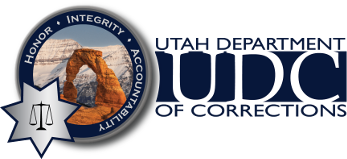On March 31, 2015, Utah Gov. Gary R. Herbert signed House Bill 348S01, “Criminal Justice Programs and Amendments,” into law. The changes affecting individuals in the custody of the Utah Department of Corrections and under the jurisdiction of the Utah Board of Pardons & Parole took effect on October 1, 2015.
The new law addresses the fact that while our State has maintained one of the lowest incarceration rates (number of people confined per 100,000 adults) in the nation, our rate has been climbing while the rate in other states has generally shrunk.
The Utah Legislature worked with the Governor’s Office of Criminal and Juvenile Justice (CCJJ) and the Pew Charitable Trusts to identify and recommend changes in our criminal justice system. The intent is to continue holding offenders accountable and securing our communities — but in a way that considers individual risks and treatment needs. JRI is driven by data and outcomes, meaning all the efforts are measured for effectiveness.
The expectation is that JRI will reduce our incarceration and recidivism rates, resulting in savings for taxpayers. The criminal justice system is moving toward incarcerating only individuals who pose a risk or a threat to the community and treating those who struggle with addictions but otherwise pose little or no danger to our neighborhoods.
This sentiment is part of a national movement already working in 23 other states and 17 local jurisdictions. Some states have slowed their prison inmate growth, while others have even reversed the trend and are seeing prison populations decline. JRI is an all-encompassing effort to make the Courts and Board of Pardons and Parole selective about who they send to prison. It also aims to help us work with probationers to ensure they never come to prison and to work with inmates and parolees to ensure they never come back to prison.
Sentencing Guidelines
Sentencing Guidelines established by the Sentencing Commission recommend how long an individual should serve in prison for a given offense and offense history. The Sentencing Guidelines were updated in October 2015 to reduce the guideline for several low-level offense categories. The Board may go above or below the Guidelines based on aggravating or mitigating factors.
Credit for Time Served
House Bill 348 expanded the definition of jail time, which can be credited as time served against a prison sentence. Jail time served as a condition of probation or for a violation of probation may be counted as time served. (Note: the Board does not grant credit for time in jail served for other convictions or probation violations unrelated to the offense that resulted in the prison commitment or when time is tolled.) This change is not retroactive and applies to new prison sentences after October 1, 2015.
Sentencing Guidelines and Parole Violations
The Sentencing Commission established guidelines about how long an individual may be incarcerated when parole is revoked. The Guidelines are no more than 60 days of incarceration for the first parole revocation, 120 days for the second, and 180 days for the third. The Board may give less incarceration time for less severe violations or when there are mitigating factors. The maximum parole revocation periods should be reserved for the most severe offenses. Under limited conditions, the Board may find an exception to the Guidelines and revoke parole for a more extended period up to the expiration of an individual’s sentence.
Earned Time Program – Utah Code 77-27-5.4
The bill reduced incarceration time (time cut) for individuals who complete approved programs that are part of the individual’s case action plan (CAP). The individual may receive four months for each program up to eight months.
Individuals with a life without parole sentence or who have been ordered to expire a life sentence by the Board are not eligible. The Board may order the forfeiture of earned time credits for a major disciplinary infraction. There may be circumstances when the previously ordered release date does not allow enough time for the entire four or eight-month time cut; however, the Board will approve as much of a time cut as practical (see Utah Code 77-27-5.4(3)(a)).
Some individuals do not have a release date either because they have not had an original hearing or are set for a re-hearing. If the individual completes a qualifying program, the Board will acknowledge the completion and consider the appropriate adjustment at the next hearing.
The Department of Corrections may submit a special attention request for additional discretionary time cuts based on exemplary performance, completing programs beyond the two CAP priorities, or other positive accomplishments.
Earned Compliance Credit on Parole – Utah Code 64-13-21(7)
Individuals may earn credit for compliance with the conditions of parole. Each month of successful parole will reduce the maximum parole term by 30 days. For example, a typical 36-month parole would be terminated at 18 months if the individual had no violations. If parole is revoked any earned compliance credit is forfeited. According to Utah Code 64-13-21(7)(a), the program only applies to individuals on a three-year parole as defined in 76-3-202(1)(a). The program began on October 1, 2015.
Response/Incentive Matrix
The Response/Incentive Matrix creates a framework for Adult Probation and Parole (AP&P) to respond to good performance or violations of individuals on parole. The matrix allows for swift graduated responses short of returning an individual to prison for technical violations, and the matrix creates incentives for positive behavior. As part of the graduated responses, AP&P may request 1-3 days of jail time as an intermediate sanction. AP&P submits these requests to the Board for approval for individuals on parole or to the Court for individuals on probation.
The matrix is published by the Sentencing Commission and can be found in the Sentencing Guidelines.
Page updated November 17, 2022
